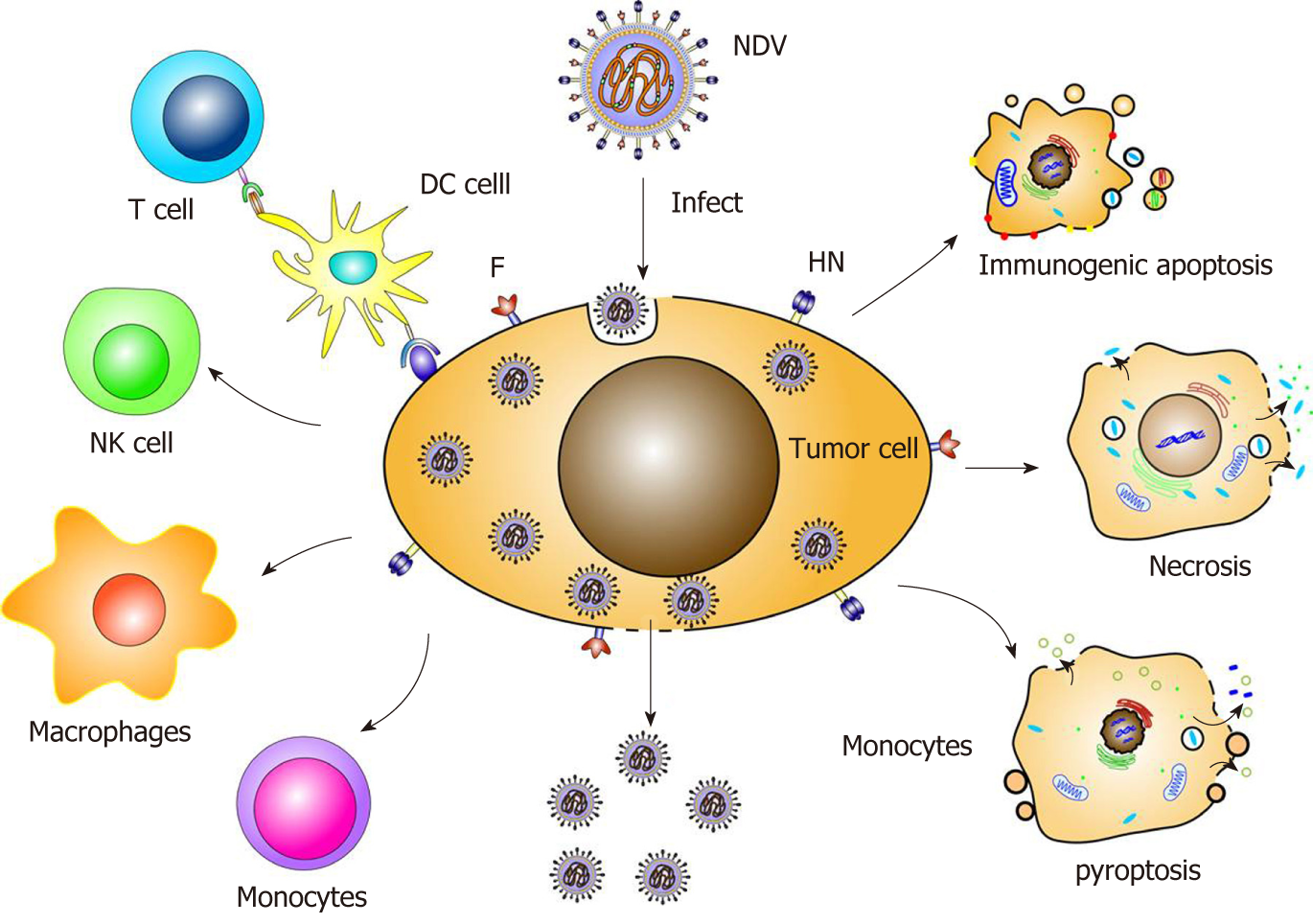Copyright
©The Author(s) 2019.
World J Clin Cases. Aug 26, 2019; 7(16): 2143-2154
Published online Aug 26, 2019. doi: 10.12998/wjcc.v7.i16.2143
Published online Aug 26, 2019. doi: 10.12998/wjcc.v7.i16.2143
Figure 1 Molecular structure of Newcastle disease virus.
Newcastle disease virus contains nuclear protein, P, L protein, M, HN and F. Among these proteins, NP, P and L combine with the viral RNA to form the ribonucleoprotein complex.
Figure 2 The main anti-tumor mechanisms and consequences of NDV infection of tumor cells.
NDV enters the cytoplasm of tumor cells by endocytosis, stimulates the host's innate immune response, activates NK cells, monocytes and macrophages and promotes acquired immunity. The antigen presentation of tumor cells is enhanced. NDV can cause the immunogenic cell death of tumor cells via immunogenic apoptosis, necrosis and pyroptosis. HN: Hemagglutinin-neuraminidase; NDV: Newcastle disease virus; NK: Natural killer.
Figure 3 Bispecific antibodies consisting of single-chain variable regions can be simultaneously targeted to viruses and immune cells.
When NDV infects tumor cells, bispecific antibodies can target F or HN on the surface of tumor cells and can simultaneously target CD3, CD25 or CD28 on the surface of immune T cells. F: Fusion protein; HN: Hemagglutinin-neuraminidase; NDV: Newcastle disease virus.
- Citation: Song H, Zhong LP, He J, Huang Y, Zhao YX. Application of Newcastle disease virus in the treatment of colorectal cancer. World J Clin Cases 2019; 7(16): 2143-2154
- URL: https://www.wjgnet.com/2307-8960/full/v7/i16/2143.htm
- DOI: https://dx.doi.org/10.12998/wjcc.v7.i16.2143











